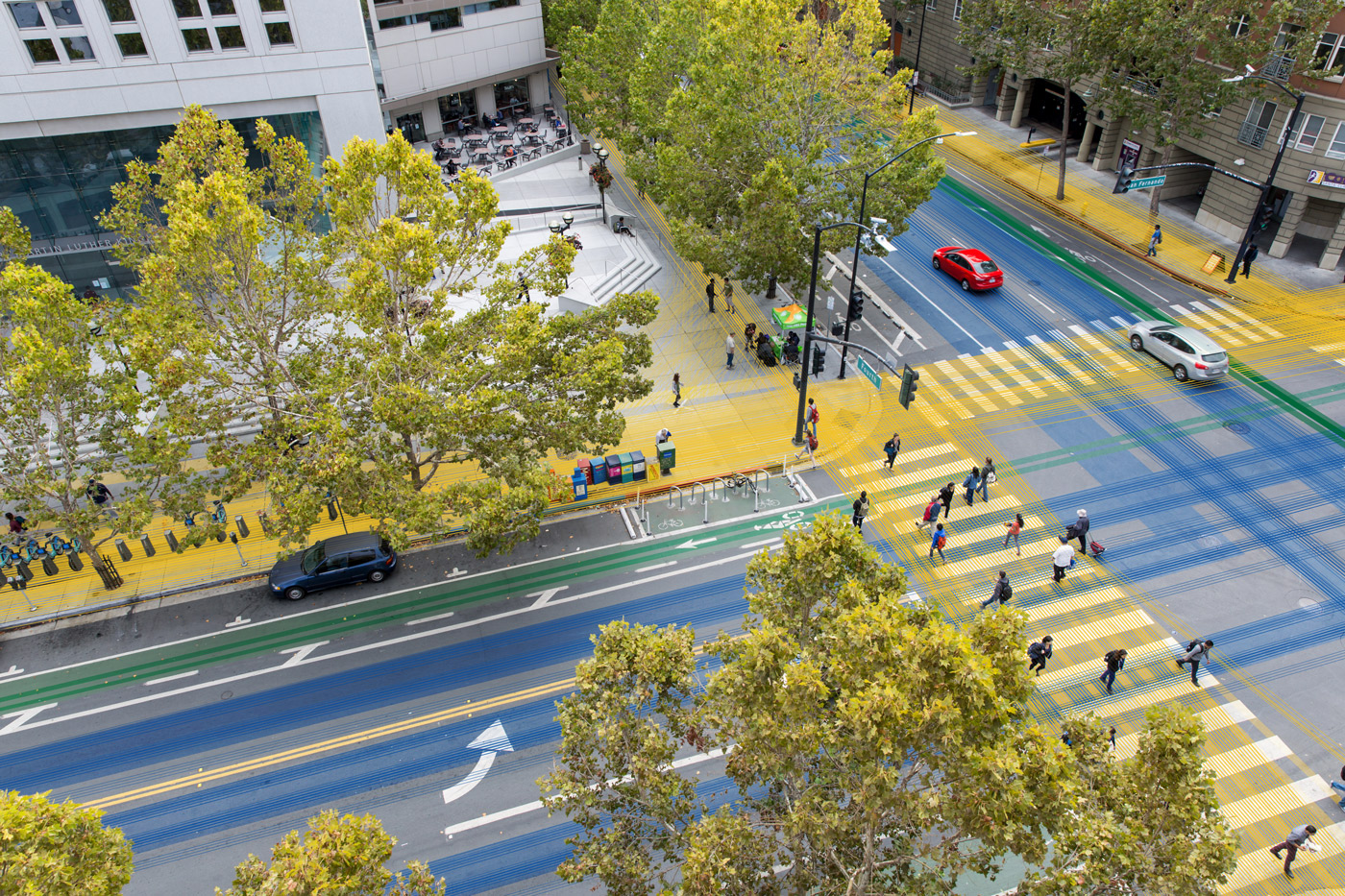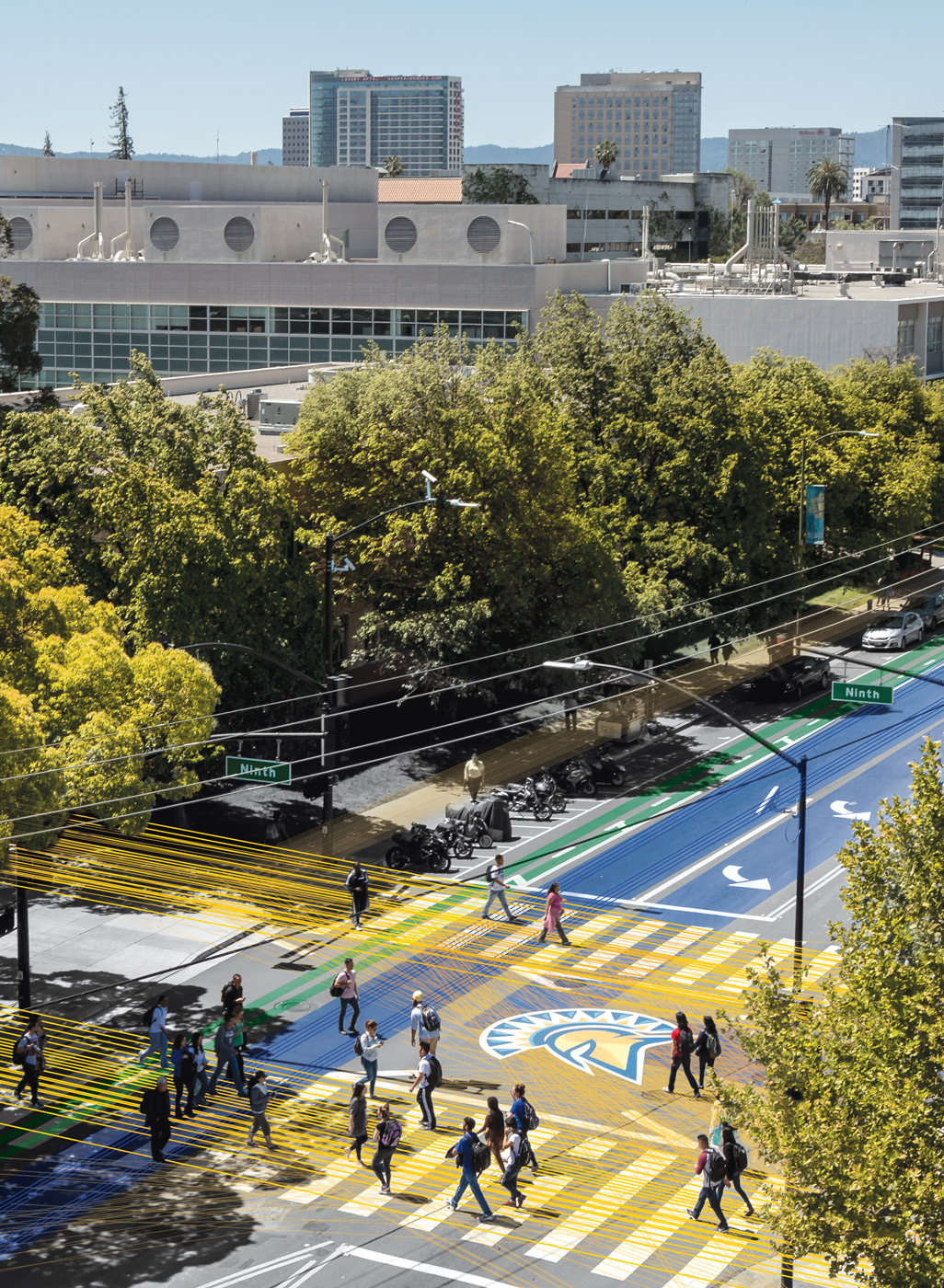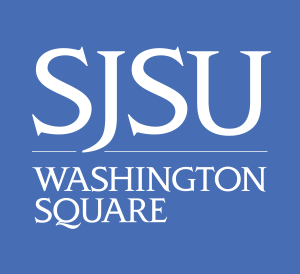The Cross Section of Collaboration
From the state’s first Normal School to what is now Silicon Valley’s public university, San Jose State has adapted and partnered with the city of San Jose to meet the needs of our transforming region.

Photo: David Schmitz
When San Jose State moved from its original location in San Francisco to San Jose in 1871, there was no predicting that acres of orchards in the valley would give way to millions of square feet of office space for some of the most valuable companies in the world.
Despite San Jose State’s location in the heart of the Silicon Valley, nestled within the 10th largest city in the United States, there has been a perception among some community leaders that the walls surrounding campus are more barriers to cooperation than portals to possibilities. “It kind of feels like there’s a fortress all around it,” says Kim Walesh, San Jose’s deputy city manager and director of economic development. “There’s not a fluid connection” between campus and downtown.
San Jose City Councilman Raul Peralez, ’04 Mathematics, notes how his alma mater was designed to be inward-facing, creating a campus boundary to what “you couldn’t assume was going to be a vibrant, growing downtown,” as it is today.
Reaching out, reaching in
A dozen years ago, the Dr. Martin Luther King, Jr. Library became the first library to be co-developed and co-managed by a city and university. Peralez says the partnership “opened up the corner of Fourth and San Fernando as an entry point to the community. I think that really started the big shift on how we can break some of the norms with working together as a college and a city. It opened the door for that relationship.”
With the university as the largest property owner in the downtown area, “we saw early on that San Jose State was a huge asset for our downtown, our city and the region—perhaps an under-appreciated and under-utilized asset,” says Walesh. She recalls the aftermath of the dot-com bust when San Jose developed its first comprehensive economic development plan, with the university as a valued partner. The plan, adopted in 2003 and reaffirmed in 2010, called for the city to move beyond perceived barriers to develop strategic partnerships with SJSU and other universities to drive innovation and economic impact.
The downtown community, especially, “understands how valuable the university is,” both in terms of its people and programs, Walesh says. In addition to 40 high tech companies that have moved into the downtown in the past year, an influx of students on campus with the construction of more on-campus housing has made a “noticeable difference. Now there’s a second wave of both campus and city construction going on, and the opportunity to welcome more students as residents downtown is terrific. There are cities around the world that are actively trying to recruit universities into their downtown core because they know what a catalyst they are. And we already have that.”

Photo: David Schmitz
Dayana Salazar, executive director of the San Jose State-based CommUniverCity, says, “More and more universities are realizing the importance of being engaged in their communities and local region.” Through CommUniverCity programs, nearly 15,000 students have worked with residents in central San Jose on community-focused initiatives benefitting the working-class residents who live in the neighborhoods around campus.
That engagement is a two-way benefit, urban planners say. Leah Toeniskoetter, director of the San Jose office of SPUR (San Francisco Bay Area Planning and Urban Research Association), says the university “plays a huge role” in urban development.
“Cities are made great by the number of people on the sidewalks and on the streets,” she says, noting the impact of students and faculty and staff members on downtown San Jose. “San Jose State is a core institution in our downtown, bringing tens of thousands of people to and through it.”
With its focus on how cities are built and managed, SPUR sees the university as a partner in the effort to find regional urban planning solutions, particularly since San Jose State’s accredited master’s in urban planning degree is one of just two such programs offered in the state—the other is offered at the University of California, Berkeley.
“We get to collaborate on thinking about solutions for the urban problems in San Jose, which is a really unique opportunity,” Toeniskoetter says. “That’s where a lot of the potential lies. If the university can do some co-development student housing downtown, it can really increase the connection between the actual campus and the city fabric. San Jose State is a hidden gem in the downtown. The opportunity to connect it with downtown and vice versa is endless.”
Model partnerships
The San Jose City Council in June 2015 unanimously approved a plan to allow the university to operate the downtown 528-seat Hammer Theatre Center, which has been closed for more than a year after the theater filed bankruptcy. The three-year agreement, according to an article in the San Jose Mercury News, is modeled after the city-university collaboration on King Library. The partnership also builds on San Jose State’s arts contributions such as Opera San Jose, founded by the late Irene Dalis, ’46 Music, ’99 Honorary Doctor of Fine Arts, Symphony Silicon Valley, which has free summer concerts on campus, and Cinequest, a film festival that draws strong participation from faculty members and students.
“I don’t think we could have found a better partner” than San Jose State, Peralez says. “This is a milestone in how the city and the university can work together. Instead of the city coming onto the footsteps of the campus, this is the university saying ‘how do we invest in an amenity outside of campus?’”
“Cities are made great by the number of people on the sidewalks and on the streets. SJSU is a core institution in our downtown, bringing tens of thousands of people to and through it.”
The Hammer Theatre agreement, still in the works, can promote other city-university arrangements, Peralez notes. “We are one of the few communities that has a state university smack dab in the heart of downtown. A lot of major universities are outside of a downtown, not necessarily right in the urban development area.”
Having thousands of students so close to downtown adds “excitement and vibrancy” to the area, Peralez says. That proximity provides an opportunity for the councilman to make multiple visits to campus for events such as a panel on housing, graduation for the MESA (Mathematics Engineering Science Achievement) program and Diversity Day. It also allows students to interact with city government, such as when they helped push for a minimum wage hike to $10 per hour, Peralez recalls. “Students are empowered to work right in the city,” he says, adding that he has met with students seeking other ways to make an impact. “If your college is 20 minutes away from city hall, you’re probably not going to have those meetings.”
Walesh agrees. She points out how San Jose State’s executive leadership, professors and students “show up and participate when we have meetings and projects and task forces related to improving the downtown.”
To that end, in September 2015, the city of San Jose and the university were announced as one of 21 city-university collaborations nationwide that will be part of the MetroLab Network, a federal program designed to leverage university expertise and build upon or build up city-university relationships. The network, including cities such as Boston, Dallas, New York and Washington, D.C., features a goal of increasing the productiveness and competitiveness of regional economies. Walesh says nearly 20 SJSU faculty members will participate.
Growing opportunities
“The cross-section of collaboration we have built keeps on expanding,” says Salazar, who in addition to directing CommUniverCity is a professor in the urban and regional planning department. “We started by saying we were going to bring together the university, the community and the city at a grassroots level.”
Having recently celebrated its 10-year anniversary, CommUniverCity continues its work engaging students and residents living in roughly a mile-and-a-half radius from campus. The program’s work has gone beyond grassroots over the past decade, Salazar says, with schools, businesses, churches and community-based organizations as partners and connections with decision-makers and elected officials in the city of San Jose, county of Santa Clara, state and federal levels.
“Most of the change is not going to happen in a short period of time. You have to be quite persistent and keep at it until something major happens.”
Students from every college on campus have an opportunity to work with CommUniverCity on community development priorities determined by the neighbors themselves, such as capturing residents’ input on how to develop a BART station near downtown. That plan became policy for the city and will inspire future transit development in urban areas, Salazar says. Students can spend a year or more engaging residents in a conversation about their neighborhoods, which abut the campus. “They do field work like door-to-door surveys, open conversations with neighbors about what has happened in the past, and what’s happening now, and setting priorities for change in the future,” Salazar says. “That’s what we use as our marching order to find faculty members at San Jose State who are interested in making those priorities happen.”
Salazar notes, “you have to be an optimist to be in this work,” which is a lesson that students who work with CommUniverCity learn. “Most of the change is not going to happen in a short period of time,” she says. “It’s going to take many years for us to capture the impact of what’s happening. You have to be quite persistent and keep at it until something major happens.”
Like others, Peralez thinks creating more opportunities for the campus to reach out and the community to reach in is mutually beneficial. With the ongoing urban development boom in his district, which includes SJSU’s main and south campuses, Peralez views this as the time for the university “in the heart of it all to take advantage of its location.”
From a planning perspective, Toeniskoetter envisions future initiatives such as a student district along the Fourth Street border of campus and a strengthening of the campus-city connection through more bicycle lanes and transit connections to athletic facilities on campus, and near the San Jose Center for Performing Arts, the Tech Museum of Innovation and the San Jose Convention Center, which are all within six blocks of campus.
The university may face inward from a structural standpoint, but with more partnerships connecting San Jose State and downtown San Jose, it is the people who will move through city and campus boundaries, gaining ground and a sense of purpose along the way—continuing to add vibrancy to the region.




I’m an alumnus who graduated on June 01, 1973, MS in Materials Science. The content of 11 page-long article was very helpful for me to understand better what’s going on in SJSU.